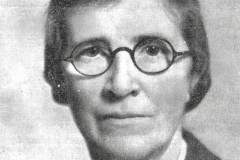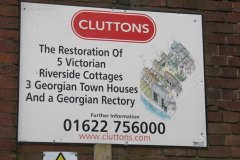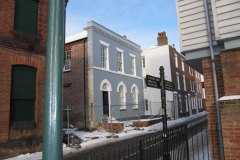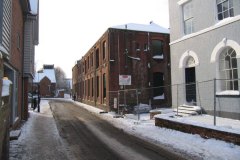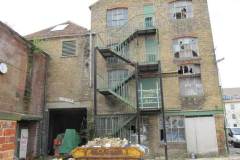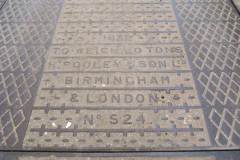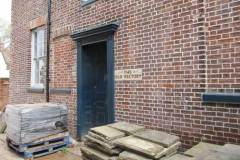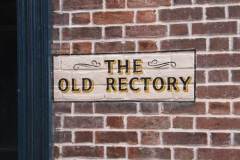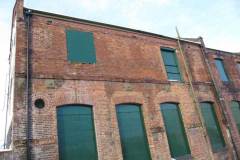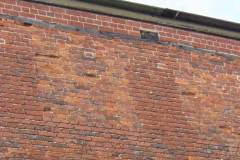Stour Street
When the St Mildred’s Tannery site finally closed in 2002 it marked the end of over 200 years of tanning and leather work in Canterbury, associated with six generations of the Williamson family. Stephen Williamson (1770-1813) was born in Canterbury, and baptised at St Paul’s church on 6 May 1770. His parents John Williamson and Susannah Row had been married at St Mildred’s church (2 September 1760). Stephen founded the firm in the 1790s in premises at 18/19 Sun Street, but around 1810 opened a shop opposite at 5 Sun Street (now part of Debenhams). The outbreak of the Napoleonic wars proved good for business – 5000 troops stationed in the area needed boots, harnesses, and other leather items. Stephen died on 18 March 1813 and his body lies in St Alphege church. His nephew John James (1792-1881), grandson Stephen (b. 1823) and great grandsons Stephen (b. 1856) and Henry (b. 1867) and later generations all carried on the trade. The family moved from Sun Street to Best Lane in the 1850s, and Stephen (b. 1823) purchased Tower House in Westgate Gardens in 1886.
The Williamsons conducted their tannery business at The Friars from around 1838. By 1851 it was employing 7 men and a boy, and this rose to 9 men and 3 boys by 1871. The St Mildred’s tannery was added to the business in 1879. Despite complaints about the stink of the tannery processes so close to the city centre, the business grew and expanded across the Stour with a small bridge.
In the early 20th century the business became a major supplier to Connollys, a London firm with a specialist currying works in Wimbledon and contracts to supply fine leather for the new motor car trade. The relationship with Connollys thrived, and despite serious fires on the Stour Street site in 1931, Canterbury leather found its way into Rolls Royces, Bentleys, Daimlers, Ferraris, and Jaguars, not to mention the House of Lords. Williamsons was acquired by Connollys in 1963.
The grandson of Stephen Williamson (b. 1856), another Stephen, and his wife Catherine, gave the Tower House and gardens to the City Council in 1936. Catherine (Image 1) became the city’s first woman mayor (1938 to 1940) and played a key role in organising the city’s civil defence during World War II. After World War II she donated a Book of Remembrance detailing the 121 civilians killed in the bombing of the city – this can be seen in the cathedral choir north aisle.
The large Tannery site on the north side of the Stour has been under development for housing by Bellway Homes. More recently, tannery buildings on the smaller Stour Street site, which have been vacant for many years, have been labelled ‘the last serious undeveloped piece of land within the city walls’. Acquired in 2006 by Colin Strickland for around £4 million, this is the building work now (2011) visible from Stour Street. The ‘Old Georgian Rectory’ property is a puzzle as there seems to be no historic evidence of any rectory on this site. The main tannery industrial block includes an odd mix of brick bonds. Suitable blue plaques (here, Sun Street, Best Lane, Tower House) would make sure we don’t forget the contribution of a remarkable Canterbury family.
What to see:
- site views in Stour Street (Images 2 to 6)
- references to the ‘Old Rectory’ (Images 7 and 8)
- brick details (Images 9 and 10)
Access: main buildings can be seen from Stour Street
: Williamson family papers are deposited at Canterbury Cathedral Archives; population census returns; information board by Tower House; photo of Catherine Williamson appears in Butler (1993)
DL

